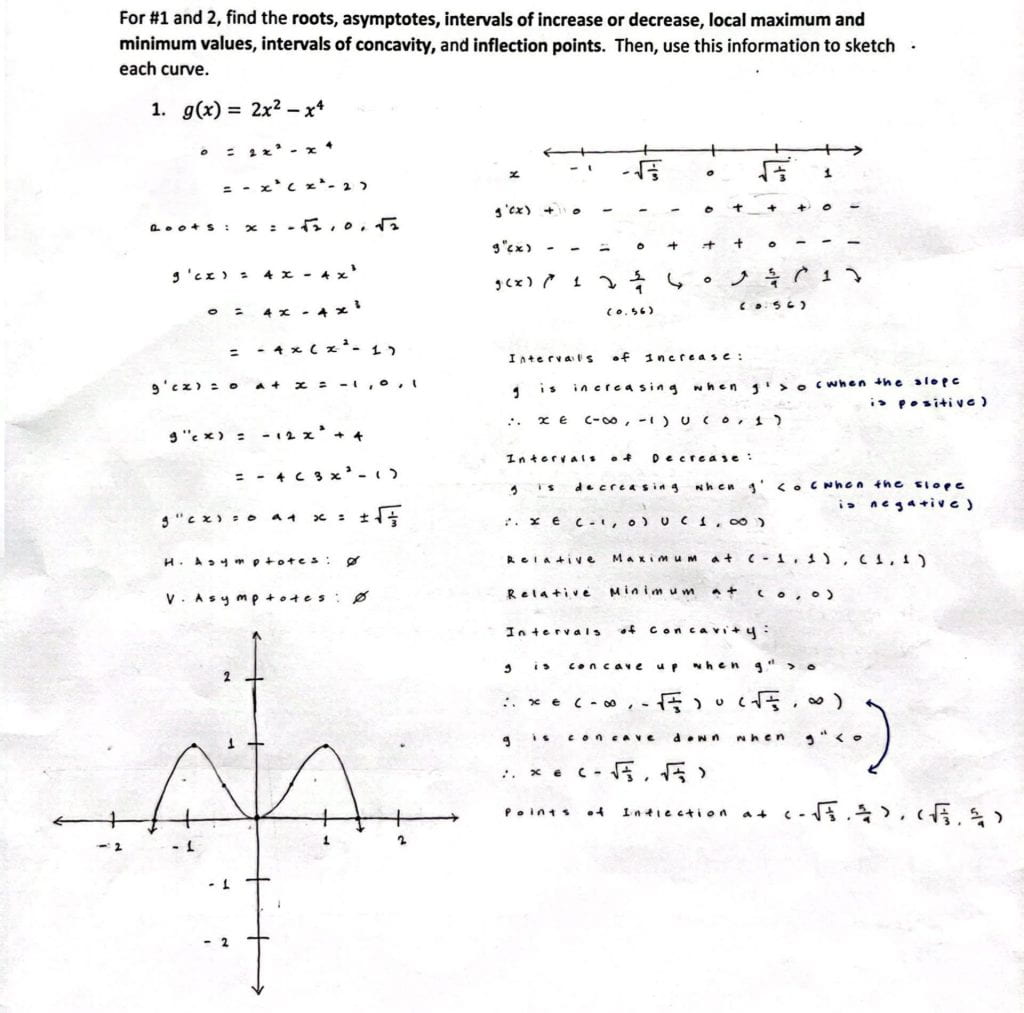
I demonstrated my critical thinking skills through applications of derivatives curve sketching problems. Curve sketching is a powerful application of derivatives in calculus, and it not only requires understanding the underlying mathematical concepts but also involves critical thinking and adaptability. Before diving into curve sketching, I needed a solid understanding of the basic concepts like critical points, local maxima and minima, points of inflection, and asymptotes. I applied my knowledge of derivatives to find critical points and determine the intervals where the function is increasing or decreasing. I learned how to test values using the sign graph. When solving this question, I considered more than one way to proceed and make choices based on roots, asymptotes, intervals of increase and decrease, local maximum and minimum values, intervals of concavity, and inflection points. The sign diagram was a new approach for me and allowed me to analyze the sign of a function or its derivative over different intervals of the domain. This approach provides a concise and visual way to understand how a function behaves without having to plot the entire function graph. In general, recognizing the domain is a crucial step in curve sketching as it influences the behavior and structure of a function. I already had a prior understanding of the concept of domain, which influenced my ability assess my thinking and develop reasoned conclusions. Since this function is a polynomial, it is continuous and differentiable everywhere. With new evidence and my prior understanding, I was able to sketch a curve at the end. I would like to grow as a critical thinker in mathematics by showing deeper analysis of asymptotic behavior and investigating how the behavior of the curve changes when dealing with higher-degree polynomials or functions. I would also like to challenge myself by applying my curve sketching skills to real-world scenarios (how curve sketching can be used to understand and solve problems in different contexts).
